How to Draw Hands
... some preliminary hand studies
Learning how to draw hands requires practise and some basic knowledge of hand proportions. Below are just a few examples of the many preliminary hand studies I've done. Most of these studies were done to prepare for my musician drawings.
This accounts for the types of hand positions you see, such as piano players, guitarists, bass players, horn players, and singers snapping their fingers.
When drawing hands I vary my technique, depending on what the hands are doing, and the effect I want to achieve. I draw , "sketchy" hands, detailed hands , moving hands , hands in shadow, highlighted hands, reflections of hands, to name a few.





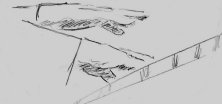
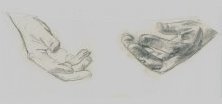





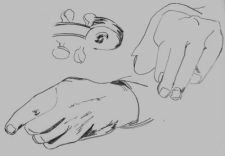
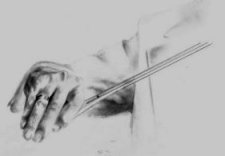
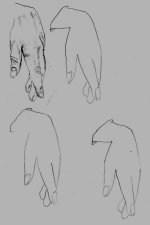
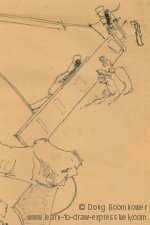
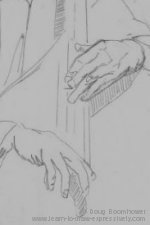



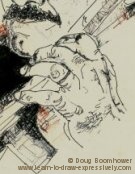
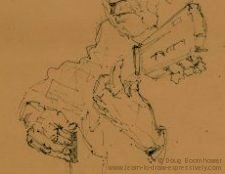

Technical Versus Artistic Demands
When I'm exploring how to draw hands, I'm dealing with technical demands, as well as artistic demands. Very detailed hands obviously demand technical proficiency, but! we cannot overlook the artistic considerations.
"Sketchy hands" although not as technically challenging, are artistically challenging because you have to create a convincing hand without relying on obvious details.
So why do that? The reason is that, as in all of my work, suggestion is often more powerful than complete exposure.
The fewer lines you use the more artistically demanding. Because you are using fewer details, the artistic demands are greater since each line or each shaded area carries so much importance. Once again, less is more.
Here are hand enlargements taken from some of my drawings.
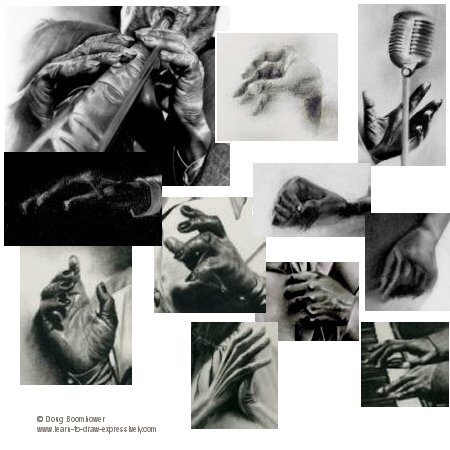
How to Draw Hands - From Pencil To Charcoal
This is a portrait of the great jazz singer, Ella Fitzgerald. I used a photographic reference for her face. Everything else in the composition was originally created. When I use photographic references, I alter those references for composition purposes, but not to the point of losing the character's likeness.
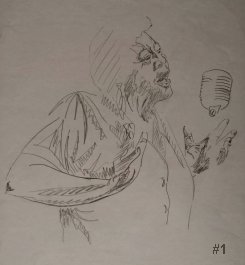
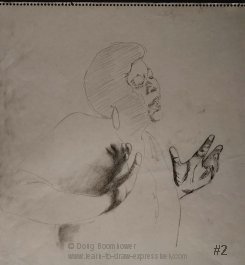
Drawing #1 established the general composition (as always, this is a combination of contour lines and gesture lines). I also roughed in areas I want to be in shadow.
Drawing #2. I'm starting to concentrate on the hands. The hands play a big part in most of my compositions. In this drawing, I used my own hands as a reference. I decided the feeling I wanted to convey, and then posed with my hands in the appropriate position. (The hands had to properly reflect the emotion in the singer’s face).
I then had my hands photographed so they could be used as references. Using these references, I established the general gestures, and then imposed my own lighting for dramatic effect. Since the singer was a woman, I had to make my hands look feminine. (Note the painted fingernails on the hand you see on the right.)
Note the shadow of the microphone falling across the same hand. This helps draw the viewer’s eye to the hand. It also creates depth and adds interest.
You will also see that the hand on the right includes more detail (skin texture, finger nails), which differentiates it from the less detailed hand on the left. The hand on the left has dramatic contrast between shadowed areas and highlighted areas.
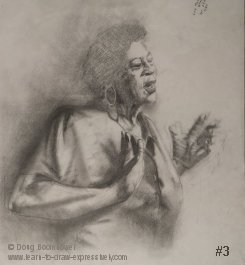
Drawing #3. This detailed pencil drawing has been taken to the final level before I start working in charcoal. I've laid out what my final product is going to look like. This way, I know in advance what to expect so I can work confidently.
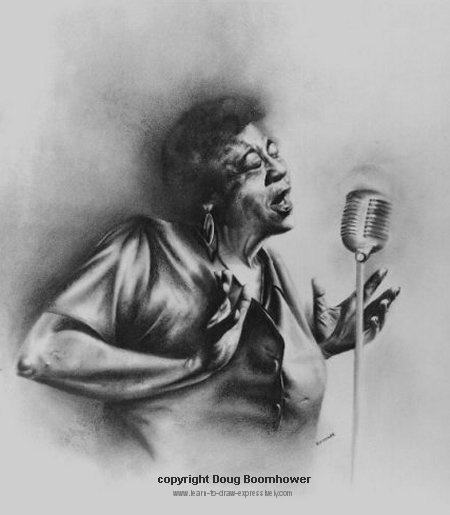
This is my final charcoal portrait. Notice the importance of lighting on the hands...the shadows and highlights create drama.
Also notice the shadow that the hand on the left throws across the dress. This gives the hand an even bigger role in the overall composition.
Regardless of the style of hands being presented however, one always has to adhere to the basic structure of the human hand.
To search my site, enter your search term in the box below, and click on the Search button. (Google ads may appear at the top of the results page ... your search results will be just below.)
Return from How to Draw Hands to
Learn to Draw Expressively Home Page




